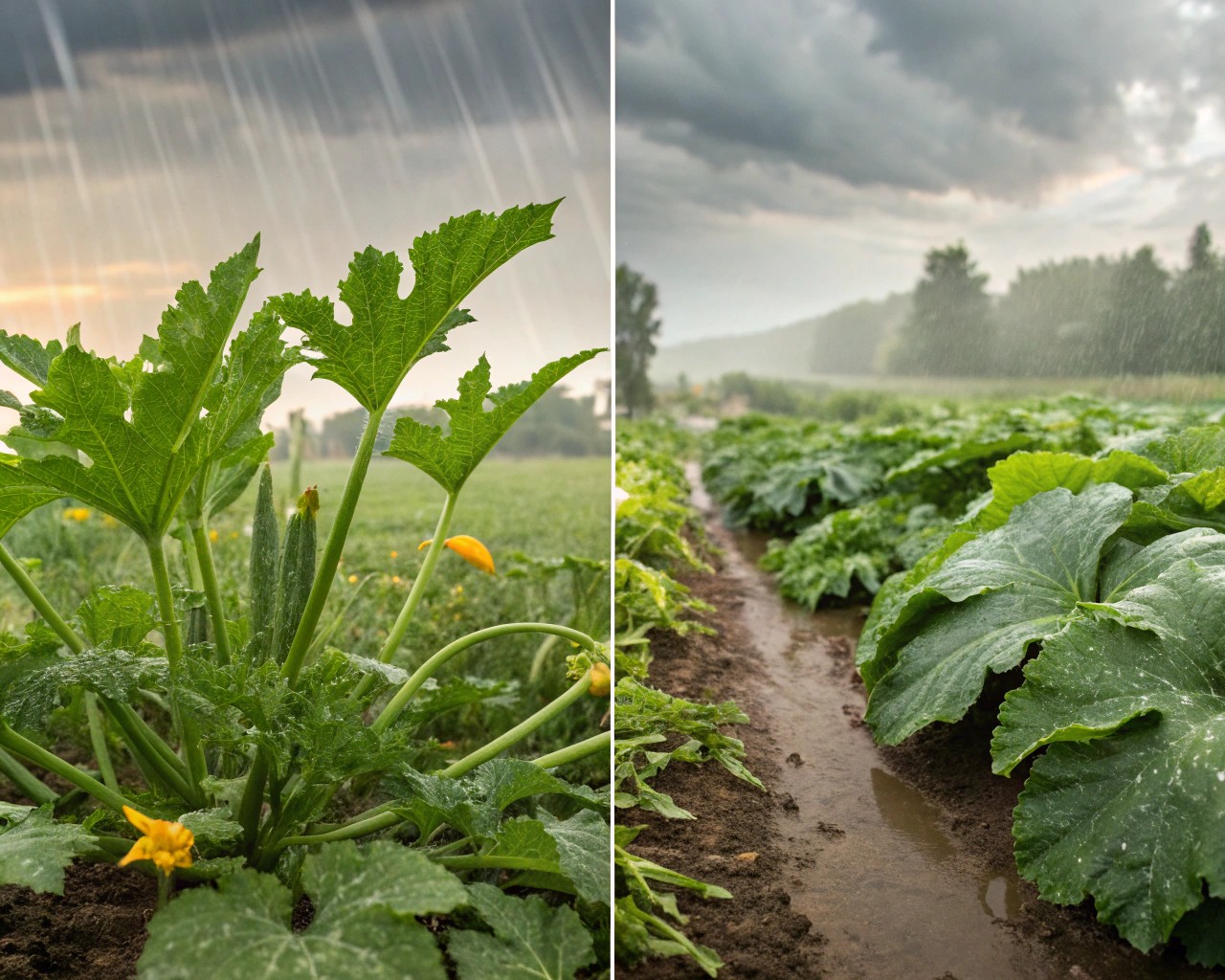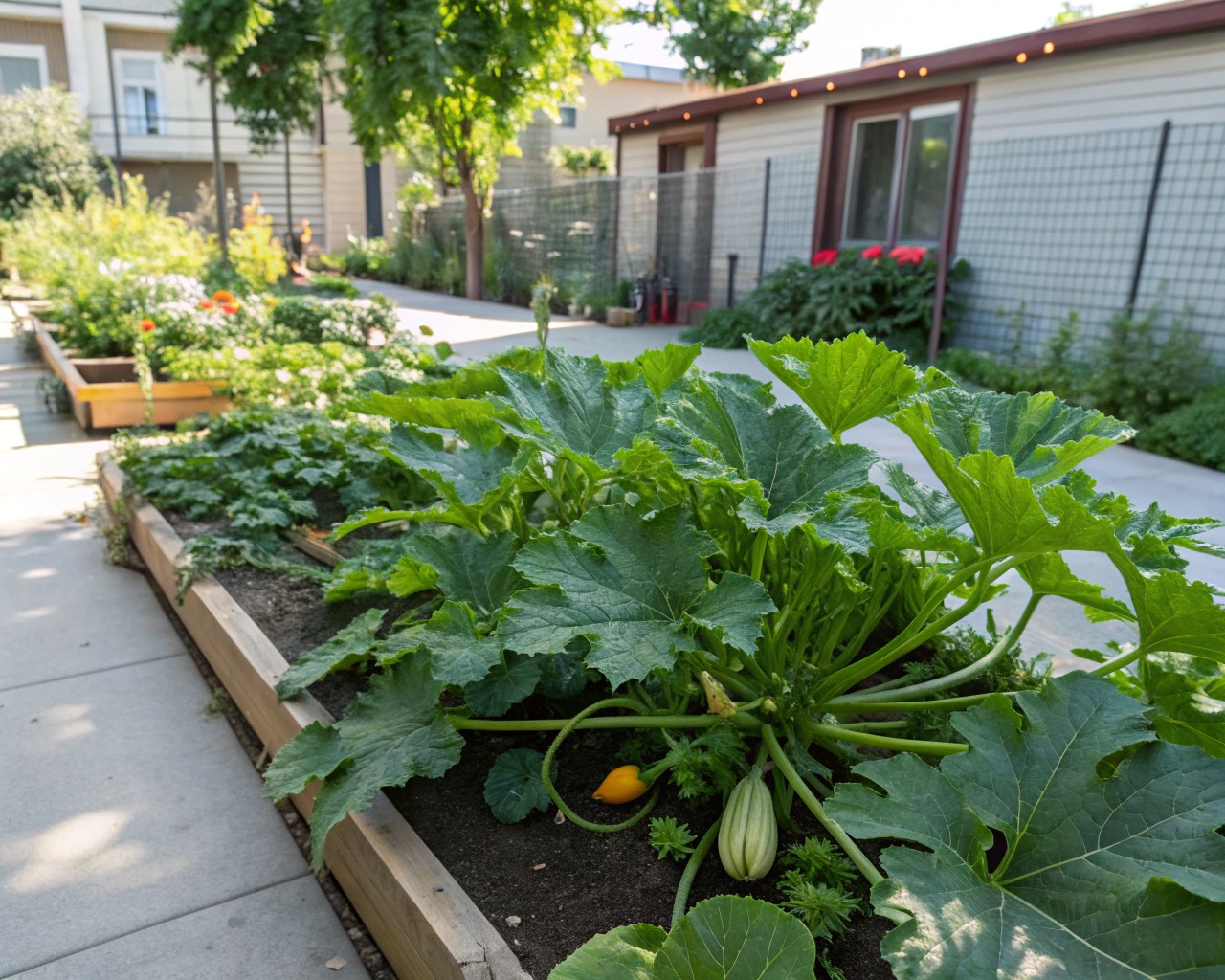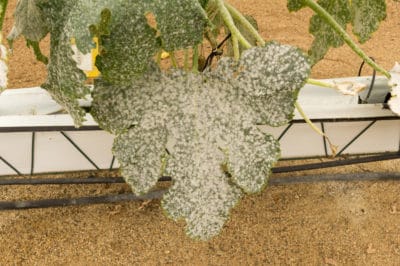Understanding Your Adversary: The Biology of Powdery Mildew

Powdery mildew on zucchini is primarily caused by the fungus Sphaerotheca fuliginea (also known as Podosphaera xanthii), a highly specialized pathogen that belongs to a group of biotrophic fungi. These fungi are obligate parasites—organisms that can only survive and reproduce on living plant tissue. This means that prevention is especially critical, as the fungus cannot typically overwinter in dead plant debris or soil.
The disease begins with white, powdery spots that appear on leaf surfaces. These spots grow rapidly, eventually covering large areas and disrupting photosynthesis. The fungus forms feeding structures known as haustoria, which penetrate plant cells to draw nutrients, while most of the fungal mass remains on the leaf surface, creating the distinctive dusty appearance.
The pathogen spreads via airborne spores (conidia), which can travel great distances on wind currents. Initial infections in temperate zones often originate from spores carried in from warmer southern regions. Because of this long-distance spread, even isolated gardens are at risk, making proactive prevention strategies essential.
Environmental Orchestration: Climate Factors and Disease Development

Powdery mildew has distinct environmental preferences that gardeners can exploit. It thrives in temperatures between 68–86°F (20–30°C), especially around 77–82°F (25–28°C). Temperatures above 95°F (35°C) inhibit the disease, and prolonged exposure to over 104°F (40°C) can kill the fungus. Below 41°F (5°C), growth halts, and frost conditions destroy spores.
Unlike many fungal diseases, powdery mildew needs high relative humidity (40–95%) to germinate—but it actually prefers dry leaf surfaces. This explains why it’s prevalent during warm days with cool, humid nights. Rain or wet foliage inhibits the fungus, making it different from water-dependent pathogens like downy mildew.
Climate Zone Considerations
- In temperate regions, disease usually emerges mid to late summer.
- In subtropical/Mediterranean climates, multiple infection cycles may occur across the season.
- In arid zones, peak summer may reduce pressure, but cooler, more humid intervals still pose risks.
Foundation Strategies: Cultural Prevention Practices

Cultural strategies are the foundation of sustainable powdery mildew prevention. Start with spacing: proper distance between zucchini plants ensures good air circulation. Avoid planting too close to walls or dense structures. Prune lower leaves and thin internal foliage to improve airflow without sacrificing vigor.
Irrigation matters, too. Water early in the day so leaves dry quickly. Use drip irrigation or soaker hoses to deliver moisture directly to the root zone and avoid wetting leaves. Avoid overhead watering unless done in early morning.
Soil health is another key factor. Overuse of nitrogen can cause soft, lush growth that is more vulnerable to infection. Aim for balanced nutrition, emphasizing potassium and phosphorus. Adding compost improves soil structure and resilience. Regular soil tests help maintain ideal nutrient levels.
Plant Selection and Genetic Resistance

Choosing resistant zucchini varieties is one of the most effective long-term strategies. Some cultivars are bred to resist powdery mildew through physical traits (like waxy leaf surfaces) or internal defenses.
Resistant varieties to consider:
- ‘Yellowfin F1’
- ‘Ziti F1’
- Other modern hybrids listed by local extension services or seed catalogs
Resistance doesn’t always mean immunity, but these plants can either block infection or limit its spread.
tip: Choose varieties suited to your region and local disease pressure. Highly resistant types are best in high-risk areas. In milder regions, moderately resistant varieties may suffice, especially if other traits like flavor or yield are priorities.
Monitoring and Early Detection Systems

Common Early Symptoms of Powdery Mildew
- Faint yellowing or mottling on older leaves
- Loss of surface gloss on leaf tops
- Small white patches of powdery residue
- Midday leaf drooping despite moist soil
Common Mistakes to Avoid
- Watering in the evening or at night
- -fertilizing with nitrogen-rich products
- Ignoring early signs until the disease spreads
- Using overhead irrigation frequently in humid weather
- Skipping resistant varieties in high-risk zones
tip: Keeping a simple garden journal with weekly notes on plant health and weather conditions can help track and anticipate outbreaks before they escalate.
Regular plant inspections help catch infections early. Focus on older, lower leaves where symptoms often start. Use a systematic method: inspect both leaf surfaces, especially in dense or shaded areas.
Look for:
- Faint yellowing or dullness before white growth appears
- Leaf texture changes
- Midday wilting despite adequate watering
Environmental monitoring can also help. Small weather stations or humidity sensors can alert gardeners when conditions favor fungal spread, prompting extra inspections or preemptive treatments.
Integrated Prevention Strategies Across Climate Zones

| Climate Zone | Risk Period | Prevention Focus |
|---|---|---|
| Temperate | Mid to late summer | Early season spacing, pruning, resistant varieties |
| Subtropical | Variable, multiple cycles | Crop rotation, variety selection, debris removal |
| Arid / Semi-arid | Cooler, humid intervals | Microclimate management, irrigation timing |
Temperate Zones
- Disease pressure grows over summer—start cultural prevention early
- Cool springs allow for healthy growth before infections peak
Subtropical and Warm Climates
- Plan for multiple disease cycles
- Rotate crops to break fungal lifecycles
- Time plantings to avoid peak risk
Arid and Semi-Arid Zones
- Humidity spikes from irrigation or cooling systems can create outbreaks
- Microclimate management around plants is key
